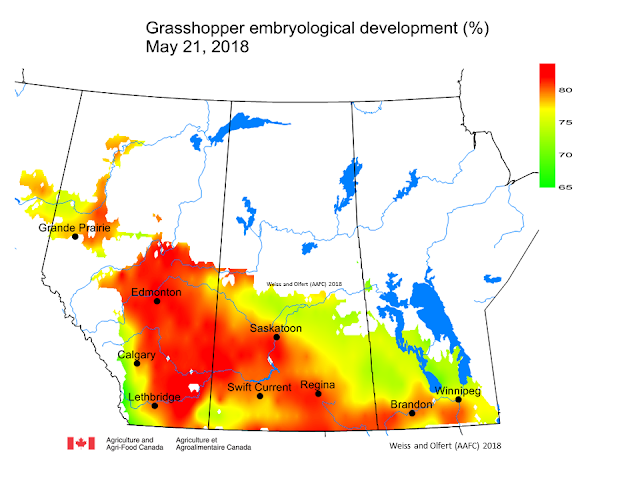Recent warm conditions have advanced egg development. As of May 21, 2018, predicted mean egg development was 78% (68% last week) and model output indicates that embryological development was 10% greater than long term average. Greatest development was predicted to be across Alberta, particularly in an area extending from Lethbridge to Edmonton (Fig. 1 and 2). Last week first instar grasshoppers were collected near Rosetown SK.
 |
| Figure 1. Grasshopper embryological development (%) for April 1 – May 21, 2018, based on model simulations. |
 |
| Figure 2. Grasshopper hatch (%) for April 1 – May 21, 2018, based on model simulations. |
Reminder - The Prairie Pest Monitoring Network's 2018 Grasshopper Forecast Map was released in March (Fig. 3). Spring temperatures, soil moisture conditions, and precipitation all have an impact on survival of overwintered grasshopper eggs. Growers in areas highlighted orange or red in the map below should be vigilant this spring.
 |
| Figure 3. Grasshopper forecast map (M. sanguinipes) for 2018 growing season. |
Biological and monitoring information related to grasshoppers in field crops is posted by Manitoba Agriculture, Saskatchewan Agriculture, Alberta Agriculture and Forestry, the BC Ministry of Agriculture and the Prairie Pest Monitoring Network. Also refer to the grasshopper pages within the new "Field Crop and Forage Pests and their Natural Enemies in Western Canada: Identification and management field guide" as an English-enhanced or French-enhanced version.